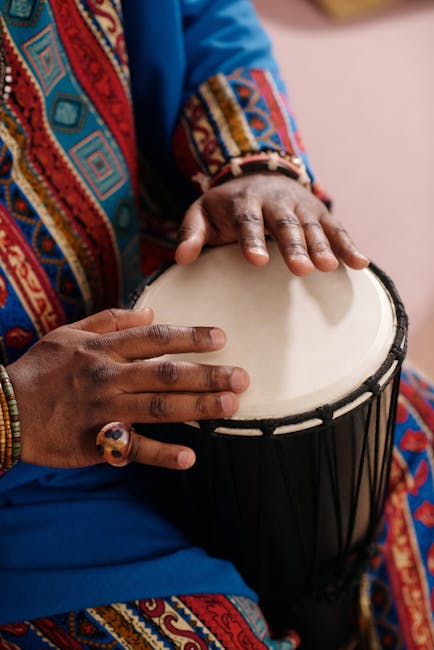[MUSIC PLAYING] My name is Farai Malianga. I am actually an
African percussionist that plays various
instruments from Africa. But today, I have two
specific instruments that I want to introduce you to. But before we do that,
let's talk about Africa. Africa is not really a country. It's a continent. And being a continent, it has
over 50 different countries in it. And in those 50
different countries, it has many, many
different cultures. So these drums really
only represent at most 10% of the entire population of
Africa in terms of the type instruments that they play. Today I only have two
instruments for you, though. So just to know– this instrument front of
you here, and the instrument that I'm sitting on. First, let me just
quickly introduce you to this instrument, which
is called the cajon. The cajon is an instrument
that's made out of a box, and played a lot in Cuba,
and also played in Peru.
But it actually
originates in West Africa, and it's called the seeker
drum, and played here with your hands. [DRUMMING] OK, so the other drum that
I'm going to talk to you a lot about is called the djembe. Now, the djembe is
spelled D-J-E-M-B-E. This drum is a drum that's
played in West Africa. The history of the djembe
comes from the Mali Empire, which was a huge
empire somewhere between 800 and 1200 AD. That's about halfway
between the birth of Christ and where we are today. The djembe is a drum that was
played for the King of Mali. And it became a
very popular drum, because everywhere he went,
whether it was in battle or was for celebration, he
would use the djembe drum. Why would he use
the djembe drum? Well, the djembe drum
is a very loud drum.
[DRUMMING] So this drum was used as
a form of communication that would be used from
mountaintop to mountaintop, and tell people about
the king was coming. In fact, there's a rhythm that
actually talks about the king is coming. It goes like this– [DRUMMING] And the rhythm's
called [INAUDIBLE].. That means, "the
king is coming." So this drum was a
communication device. What are the parts
of the djembe drum? Well, the djembe drum is made
out of four different parts. The top part is made
out of goatskin. Then to hold the goatskin
down are these metal rings– one, two, and three. Connecting the metal
rings is rope or string. And then the main part, and
most important part, of course, is the wood. Now, the wood is very
important, because it represents what a lot of Africans consider
is the family tree, which connects the youth,
the young people, which are the fruits and the
leaves, to the family, which is the branches in the tree, to
the ancestors, the people that have passed on, which is
the bottom of the tree.

So the roots of the tree
is a very important part of the African culture
and the djembe drum. So now you guys have
all four different parts of the djembe drum– goatskin, ring,
strings, and wood. I guess I'll talk a little bit
about the three sounds that come out of the djembe drum. First sound is bass– [DRUMMING] –which is in the middle. Second sound is the tone– [DRUMMING] –which is on the side. And the highest
sound is the slap– [DRUMMING] –which is done with
your fingertips. Bass, tone, slap,
bass, tone, slap. So as you can see, the
drums are very complicated. And the djembe has three main
sounds that are played on it. But there's a lot
of different sound that you can get
out of this drum if you're a
professional drummer. So now you have a basic idea of
what the djembe is all about.
Maybe you can continue and
learn a little bit more..

